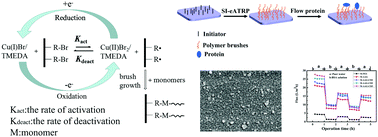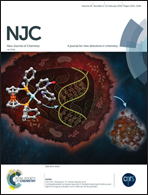Hydrophilicity and anti-fouling performance of polyethersulfone membrane modified by grafting block glycosyl copolymers via surface initiated electrochemically mediated atom transfer radical polymerization
Abstract
In this study, we synthesize a modified polyethersulfone membrane through surface-initiated electrochemical atom transfer radical polymerization of glucose allyl amide and cyclodextrin acrylic acid to construct block copolymer brushes on the membrane surface. NMR is used to characterize the synthetic monomers; X-ray photoelectron spectroscopy, scanning electron microscopy, and atomic force microscopy are employed to characterize the chemical compositions, morphologies, and roughness of the membranes. The results of static water contact angle testing show that the modified membranes with a polysaccharide surface have good hydrophilicity. In addition, filtration experiments fed with pure water and BSA show that both the permeation and anti-fouling properties of the fabricated membranes are improved compared with pristine polyethersulfone. These results show that the efficient approach of surface-initiated electrochemical atom transfer radical polymerization of saccharide monomer can be used for the surface design and fabrication of a polymer membrane, which can be employed for practical applications in separation and purification fields.



 Please wait while we load your content...
Please wait while we load your content...